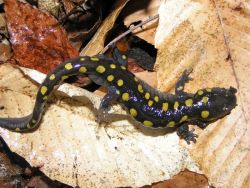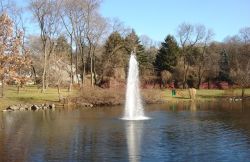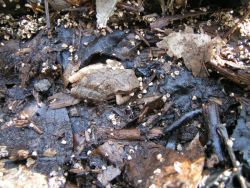Allison Pond Park
Allison Park
This park honors George William Allison (1888-1939), an engineer who used his expertise to usher in a new era of public works in Staten Island when President Franklin D. Roosevelt (1882-1945) established the Works Progress Administration in the 1930s.
Allison was born in Virginia. He graduated from the Locustdale Military Academy in 1905, and from Washington and Lee University in 1910. Soon thereafter, Allison went to work for the engineering firm of Morrison and Pettigrew. In time, he took over the firm, and renamed it Allison & Ettlinger. The offices of Allison & Ettlinger were located at 36 Richmond Terrace in St. George, Staten Island. Allison eventually settled with his wife and two children in West Brighton.
Through his work and contacts, Allison soon became heavily involved in public affairs. He served as president of the Staten Island Academy and as a trustee of the Staten Island Institute of Arts and Sciences. In 1934, he was appointed Borough Works Commissioner. As such, he supervised all Works Progress Administration (WPA) projects on Staten Island. The WPA projects were federally sponsored and directed public works efforts intended to provide employment and improve public infrastructure during the Great Depression. After four years of working with the WPA, Allison’s health began to fail. He died of a heart attack in December 1939.
The site of Allison Park, which encompasses Allison Pond, was once part of Sailors’ Snug Harbor. This unique institution was conceived in 1800 by Captain Robert Richard Randall, a wealthy retired sea captain. Captain Randall donated his 21-acre farm in the vicinity of Manhattan’s Washington Square as an asylum for “aged, decrepit, and worn-out sailors.” When Randall died in 1801, his land had become extremely valuable property to the northward-expanding city. The trustees of Randall’s will elected to lease the property near Washington Square and to use the revenues generated to purchase 125 acres on Staten Island for the asylum. The home opened in 1831 with 27 residents. By 1900, Sailors’ Snug Harbor was home to over 1,000 retirees. Snug Harbor became a leading charitable institution and a model for care of the elderly, but after World War II, the number of residents at the asylum declined. In 1975, the property was sold to the City of New York, and the facility was moved to Sea Level, North Carolina, where it still operates today.
Allison Pond, adjacent to the Sailors’ Snug Harbor Cemetery, once provided part of the asylum’s water supply. When a borough-wide municipal water system was implemented in 1939, the institution had no functional use for the pond. The trustees of the property deeded the pond site as a gift to the City, which transferred it to Parks in 1943. Since that time, the local community has used the pond and brook for fishing and strolling its banks.
A stone pedestrian bridge spanning the mouth of the pond adds interest to the landscape, as do the many mature trees and grasses. The park was renovated in 1990. New additions to the site included tree guards, new fencing, and railings. Boulders were placed around the pond and several new trees and flowers of many species were planted, including red maples (Acer rubrum), American beeches (Fagus grandifolia), tulip trees (Liriodendron tulipifera), swamp white oaks (Quercus bicolor), downy shadblows (Amelancier arborea), sweet bay magnolias (Magnolia grandiflora), witch hazel (Hamamelis virginiana), blackhaw viburnum (Viburnum), pink summer sweet (Clethra), northern bayberry (Myrica), Redosier dogwood (Cornus), swamp azalea (Rhododendron), mountain laurel (Laurus), various ferns (Osmundaceae), including columbines (Aquilegia), dwarf bleeding hearts (Dicentra), sensitive (Fabaceae), Solomon’s seal (Polygonatum), and marsh marigolds (Caltha palustris).
Check out your park's Vital Signs
Clean & Safe
Green & Resilient
Empowered & Engaged Users
Share your feedback or learn more about how this park is part of a
Vital Park System



